Information
Source: Metropolitan Police Service
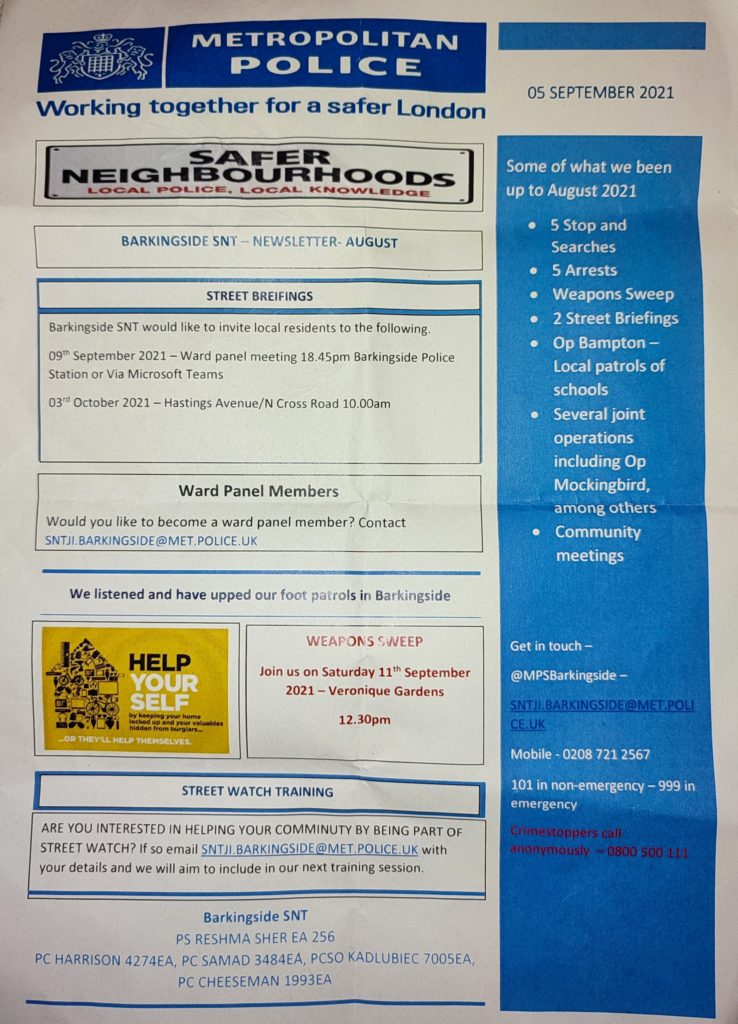
Source: Metropolitan Police Service
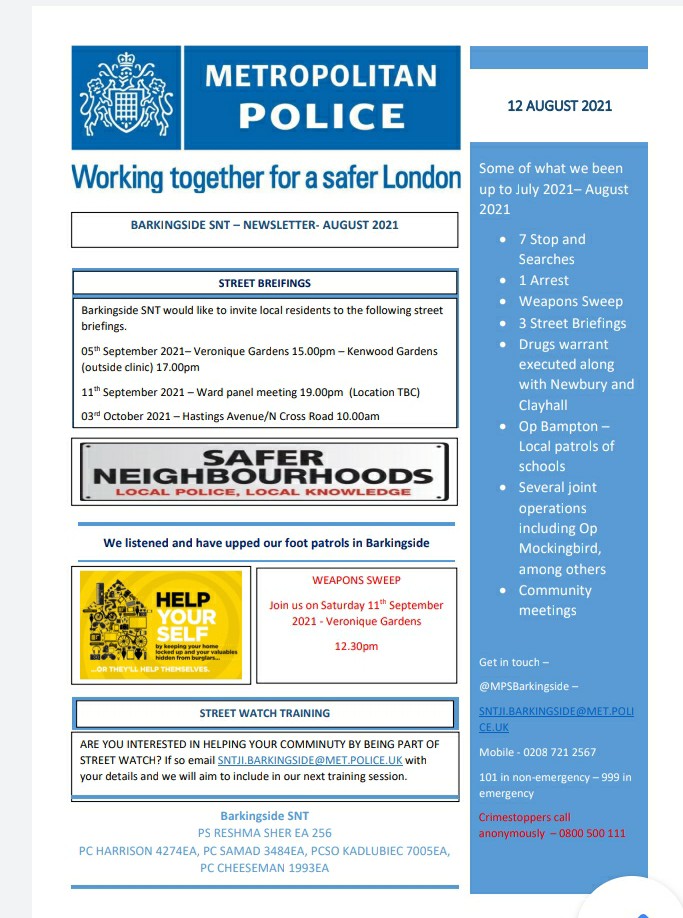
Double Lock
Simply shutting the door won’t prevent burglaries. Double-lock the door every single time you leave the house.
Modern multi-locking and uPVC doors use a system of hooks and latches to secure the door but these only work if you lift up the handle and then remember to turn and remove the key. Remember – lift, lock and remove.
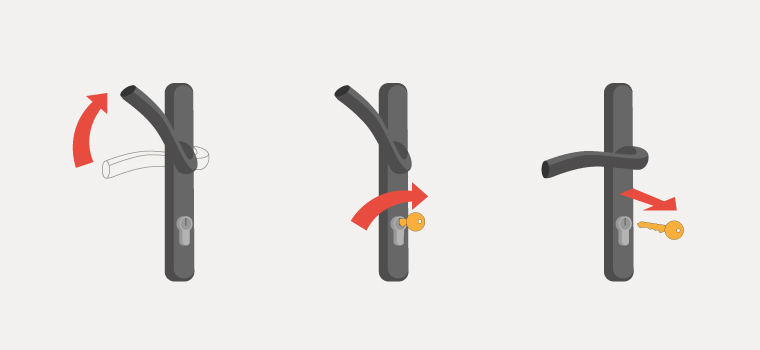
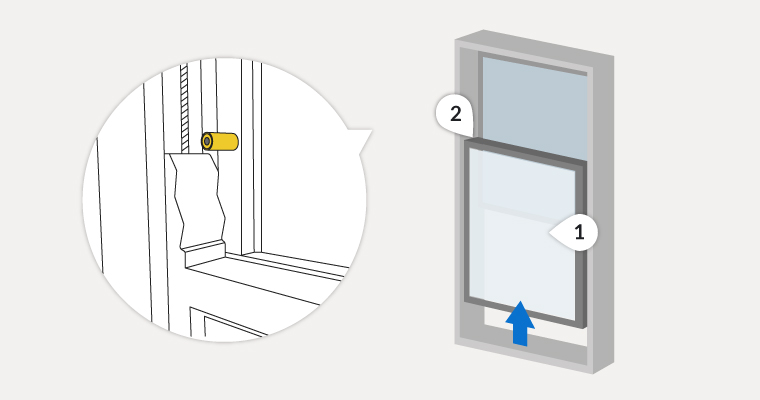
Windows
1. Laminated glass or security film is recommended for ground floor and accessible windows.
2. Sash stops prevent anyone opening the sash window enough to climb through.
Windows
3. Key operated locks are recommended for window types that open out, rather than up, and any ground floor or accessible windows. Remember, window locks are only effective if used, so check that you have locked them before you leave home or go to bed.
4. Window opening restrictors allow you to ventilate your home but make sure they can’t be picked and unlocked from outside.
If you’re replacing your windows, always consider a security accredited product as these windows are tested to British standards and are insurance approved. A good standard is PAS 24 2016.
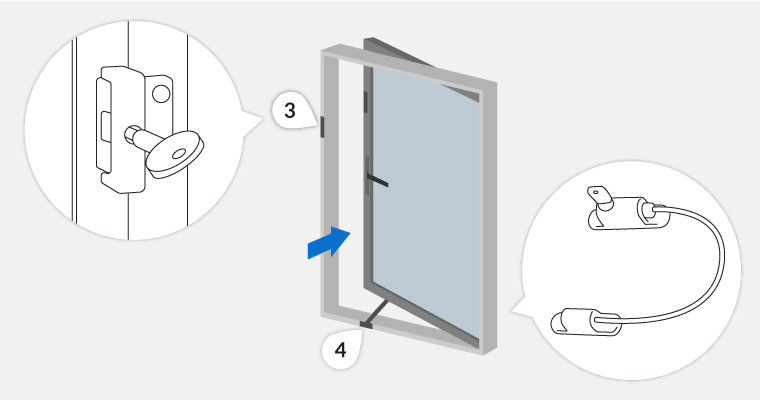
If you’re replacing your windows, always consider a security accredited product as these windows are tested to British standards and are insurance approved. A good standard is PAS 24 2016.
Doors
1. If your door has a letterbox, a guard fitted to the rear of the door will prevent someone reaching in with a stick and a hook to fish for any nearby items such as a handbag or keys – which should never be kept near exterior doors. Consider cat flaps and dog flaps too.
2. Windows can be reinforced by using special film or by installing laminated panels.
3. Spy holes and security chains are recommended so that anyone visiting can be identified before you open the door.
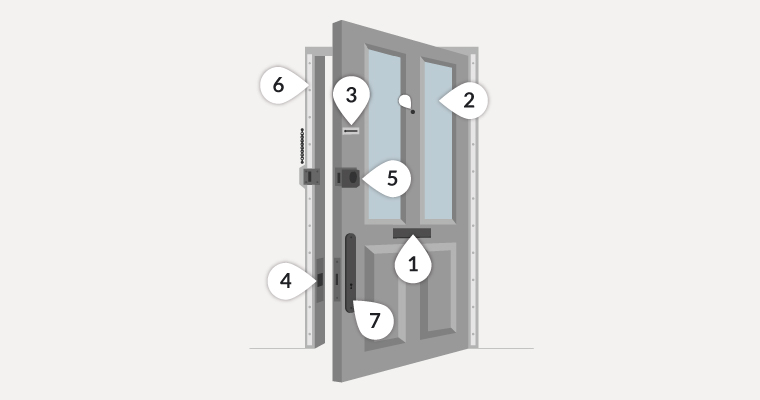
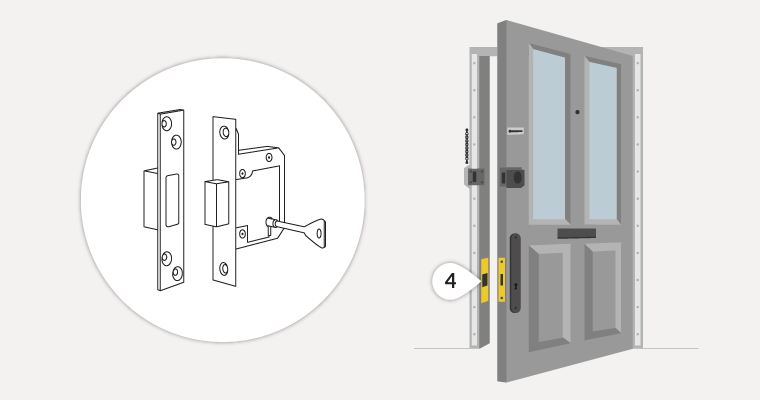
Door Locks
4. Always remember to use both locks and check to make sure that the mortice lock is double-locked every time you leave your home.
Latch
5. A simple turn of a double-locking nightlatch gives you added security and peace of mind.
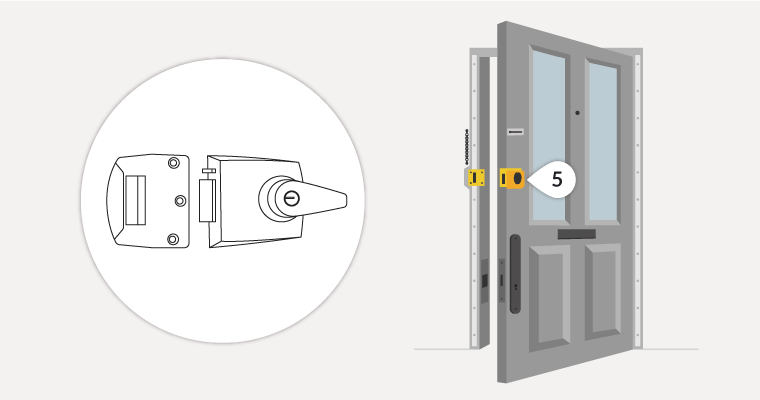
Door Bars
6. Door bars, such as a London Bar or Birmingham Bar greatly reinforce the doorframe and provide excellent protection against anyone trying to force a door open or kicking it down.
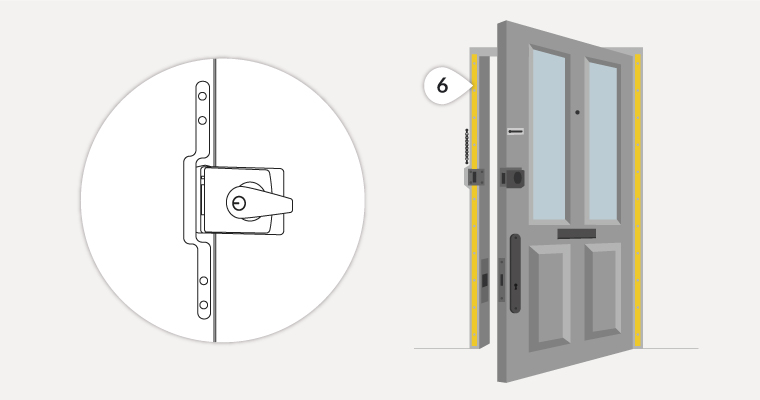
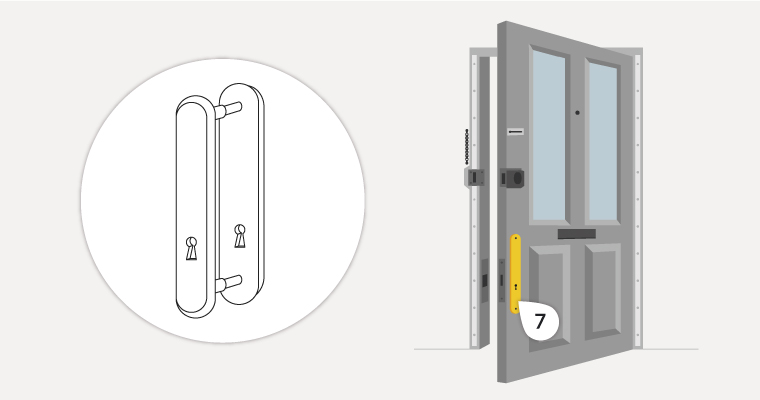
Lockguard
7. A lockguard does exactly that; it protects the keyhole and lock from being tampered with and is a great deterrent.
If you are putting in a new front door, always fit security accredited products as these are tested to British standards and approved by the insurance industry. Talk to your locksmith about standard PAS 24 2016.
Home and Garden
- Low front boundary; keep hedges and walls at the front of your house low (under one metre) so burglars have nowhere to hide.
- Secure side gate; keep side gates locked at all times. Open gates mean burglars can easily access your home without being seen by passers-by or neighbours.
- High side and rear boundaries with trellis and spiky defensive planting; keep hedges, walls and fences around your back garden high (over 1.8 metres). Add lightweight trellis to gates and fences and plant some prickly plants to make it harder for burglars to climb over.
- Gravel driveway and path; gravel driveways and paths make it harder for burglars to go undetected.
- Security light; install an outside security light so that intruders can’t approach without being seen.
- Intruder alarm system; install a burglar alarm system.
- Secure shed door and window; always keep your shed locked and secured. Often sheds contain valuables such as power tools and bicycles.
- Never leave tools lying around; never leave tools lying around as they can be used as a way of breaking into your home.
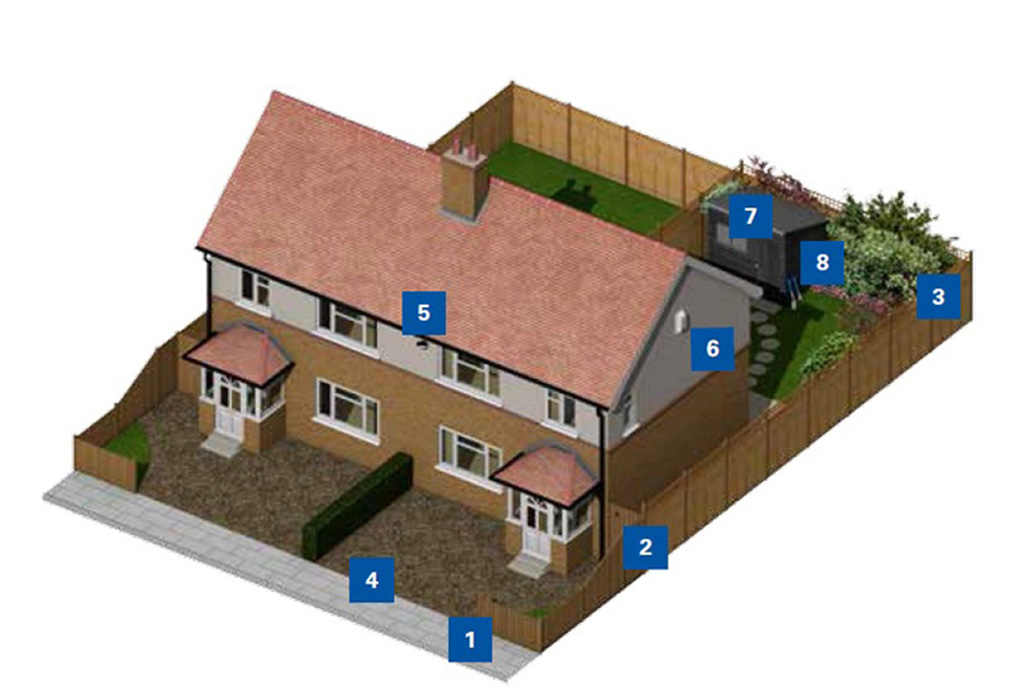
Visibility
- Lower fences at the front around one-metre high are preferable to high fences as they allow for a clear view over the top and don’t provide cover for anyone wishing to hide.
- At the rear and sides, taller fencing is recommended to prevent easy access.
- Trellis, thorny plants, or a suitable anti-climb topping such as plastic spikes make it difficult for anyone climbing over a fence or gate.
- Planting prickly or barbed shrubbery along boundaries and fence lines acts as an effective natural barrier.
- Gravel driveways and paths will make sure you hear anyone approach.
Car - Exterior
1. Always lock it
Fuelling up or popping back into your house to get something are perfect examples of how easy it is to turn your back for a moment and forget your vehicle is unsecured. So get into the habit of locking your vehicle even if you’re only going to be away from it for a moment.
2. Close windows and the sun roof to prevent ‘fishing’
Leaving windows and the sunroof open invites fishing for items through the gap by hand or with, say, a bent coat hanger, which could also be used to unlock a door for them to get in. Thieves can be ingenious. Don’t give them the opportunity.
3. Secure your number plates with tamper-resistant screws
The easiest way to change the identity of a stolen vehicle or avoid speeding tickets and parking tickets is to fit stolen number plates. Using security screws to attach your vehicle’s number plates makes it harder for thieves to get your number.
4. Fit locking, anti-tamper wheel nuts to secure alloy wheels
Stolen wheels are valuable, either as parts or for their scrap value. Using locking wheel nuts reduces the risk of your vehicle’s wheels being stolen. Besides, your vehicle will always look better on wheels than on a pile of bricks.
5. Secure anything that’s on the outside of your vehicle
Anything left on roof-racks, tailgate racks, holiday top boxes or in tool chests are easily stolen when the vehicle is parked. The use of cable locks, padlocks and self-locking tools chests, which are secured to the vehicle, makes them more secure, but still, don’t leave things in them if you can avoid it.
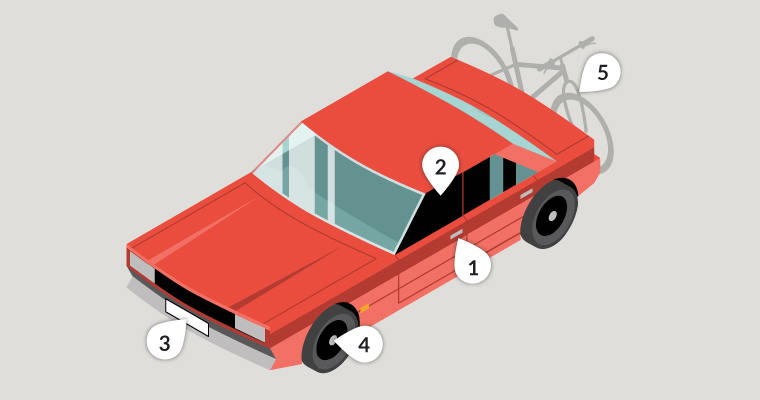
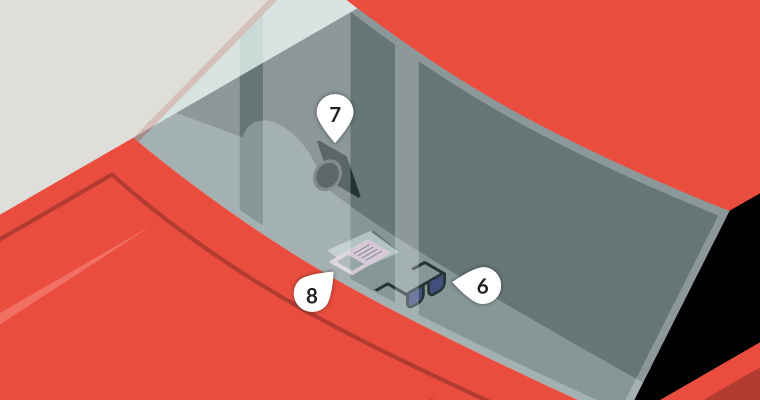
Car - Interior
6. Take it with you or hide it
Your mobile phone, coins for the car park, sunglasses, packs of medication or other items that can earn quick cash are irresistible to the opportunist thief. Remember, the cost of replacing a window is often much more than that of what’s stolen. And it should go without saying that wallets, handbags, purses and credit cards should never be left in an unattended vehicle.
7. Hide electrical items and leave no clues
Leaving sat nav mounts, suction cup marks on windows or cables on view gives it away that you have left a Sat Nav, smartphone or other device in your car. Even if they can’t see the Sat Nav or iPad they might still break in to see if it’s stored in the car, out of sight.
8. Take your documents with you
Having a vehicle’s registration and insurance documents could let a thief pretend to be the owner. Which means they could sell it on quite easily. So, never leave any documents in the vehicle.
Parking
9. Park in well-lit and busier areas
It can take less than 30 seconds to break into a vehicle. Parking in well-lit areas and busy streets increases the chances of a thief being seen, so they’ll probably steer clear.
Choose your car park wisely
If possible, always try to park in well-lit and staffed car parks or those with a Park Mark safer parking award.
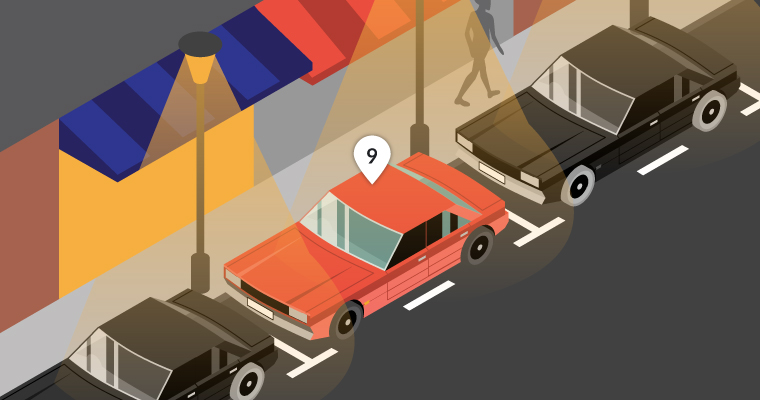
Protect your car
- Locking your vehicle, even when filling up or parked on your drive, greatly reduces the possibility of it being targeted by an opportunist thief. Even if you have locked your vehicle, check you haven’t left any windows or the sunroof open.
- It is actually illegal to leave your vehicle running unattended while you de-ice it or warm it up in cold weather. If someone takes it while it’s left like this, your insurer won’t pay out because you won’t be covered.
- Vehicles today are by and large more difficult to steal than ever, unless the thief can access your key or fob to clone them. Best to keep your keys safe, out of view when at home, and away from your front door. It’s not uncommon for car keys to be stolen from inside your home by thieves fishing for them with a stick and hook through the letterbox.
- When not in use, keep your electronic car key in a security pouch to prevent it being scanned by thieves to open and steal your car nearby.
- The fact that you’re in the car isn’t always a deterrent to someone trying to steal it.
- In traffic, drive with the doors locked and when queuing leave enough space in front of your vehicle to enable you to get out of a tight spot. If your vehicle is bumped from behind, wait to pull over – somewhere safe and preferably where there are people. After all, you don’t know the person who has collided with you; they could well be hijackers. If you’re at all suspicious, consider calling the police.
- If someone threatens you, it’s better to hand over the keys to the vehicle than become a victim of assault. Then dial 999 as soon as possible, and ask for the police.
- If your car is stolen, some modern vehicle alarm and tracker systems have the facility to isolate or shut down fuel systems, bringing the vehicle to a halt and leaving the thief high and dry.
- It’s always advisable to avoid parking in dark and secluded areas. It’s worth an extra five or ten-minute walk if it means your vehicle is left in a well-lit and busier street. And if possible, always try to park in illuminated and staffed car parks.
- Thieves often attempt to lift vehicles from the street, literally. So, if you see a towaway crew acting suspiciously – especially if their vehicle isn’t branded or if they’re not in uniform – then please report it immediately.
- Did you know that car parks with height-restricted entrances help prevent illegal tow trucks and removal vehicles? What’s more, fitting a Thatcham rated category 1 or 2 alarm system with tracking, immobilisation, anti-grab and movement sensors can help protect and trace your vehicle.
- Bear in mind that built-in steering locks aren’t necessarily thief-proof but fitting and/or a gear lever or clutch pedal security device can give your vehicle added protection.
- Electronic devices can be used to jam the electronic signal from your key fob to lock your vehicle. Always manually check your vehicle has locked before walking away. If unsure, lock it manually, then scan the immediate area for anyone hanging around. If a potential thief who’s watching feels they’ve been spotted, they’ll probably move off.
Key Scanning
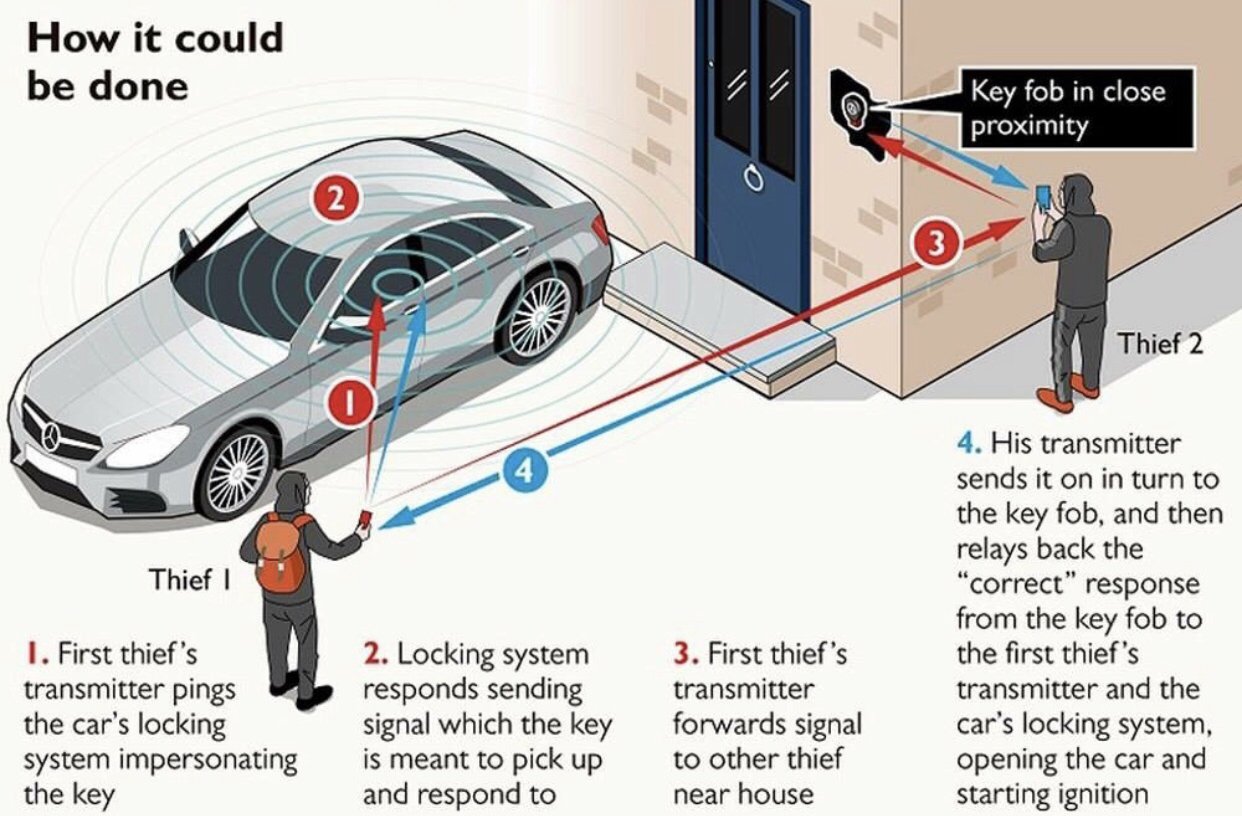
Checklist
Recommendations of what to do before you go out:
☑ Close and lock all your doors and windows, even if you’re only going out for a few minutes
☑ Double-lock any door
☑ Make sure that any valuables are out of sight
☑ Keep handbags away from the letterbox or cat flap and hide all keys including car keys, as a thief could hook keys or valuables through even a small opening
☑ Never leave car documents or ID in obvious places such as kitchens or hallways
☑ In the evening, shut the curtains and leave lights on
☑ If you’re out all day, then it’s advisable to use a timer device to automatically turn lights and a radio on at night
☑ Set your burglar alarm
☑ Make sure the side gate is locked
☑ Lock your shed or garage
☑ Lock your bike inside a secure shed or garage, to a robust fitting bolted to the ground or wall, like a ground anchor
